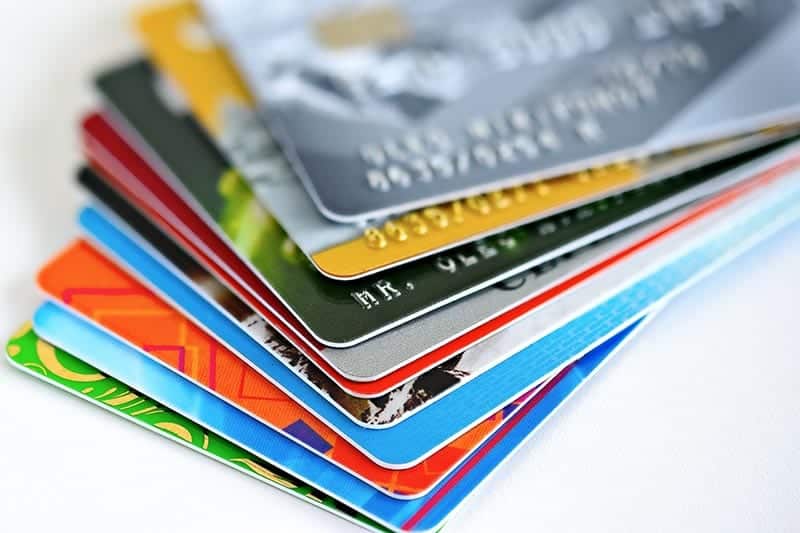“Do I really need to be EMV Compliant” is a question we tend to receive almost daily.”
The point of this blog is to understand what it means to be EMV Compliant and discuss whether it’s essential for merchants to accept chip cards.
We will also touch base on some credit card processing fees that arise when your business is not EMV compliant and how to alleviate these costs.
What is An EMV Chip Card?
EMV Chips cards are the global standard for authenticating credit and debit cards. EMV standard for Europay, Matsercard and Visa – the three organizations that pioneered the technology.
The United States began migrating to EMV Chip Cards in late 2015 – but the technology has been around for a long time.
Recently EMV technology has become common in the U.S. Majority of cards are now outfitted with a magnetic stripe on the side and include a rectangular chip (which is the EMV chip).
EMV uses a computer technology to perform verification that the card is genuine. These small chips on the card can store much more data than the old magnetic strip making them much harder to duplicate or counterfeit.
Technology of EMV
Now – we do not specialize in the technology side of things here but people are always asking what the major difference between running an EMV transactions compared to just swiping the card like the old days.
The largest difference is magstripe cards are much easier to clone than the card.
EMV is designed to prevent cloning by creating a unique code each time the card is used, whereas magstripe transactions use a static code.
EMV also helps prevents scammers from using a skimmer. A skimmer is essentially something that is installed in a terminal that copies the card data when each transaction is swiped.
The scammer then retrieves the data to create a duplicate card which usually results in extremely expensive online purchases.
Even though the EMV chip is very tiny is it playing a huge role in cutting down fraud for brick and mortar transactions.
Becoming EMV Compliant
The major credit card companies set October 2015 as the date for the EMV shift by the bulk of businesses.
There are some case by case scenarios including pay-at-the-pump gas stations which were given until October 2020 to make the shift.
Reason for this is simply that it is much more difficult to change the pay-at-the-pump system compared to a normal business type.
Businesses that did not comply to the shift starting in October 2015 are now responsible for the costs associated with accepting fraudulent transactions.
What this means is rather than the processing companies being liable for for fraudulent transactions it will now be the business.
Note: this is only the case if your business did not make the transition to EMV starting on October 2015 and anytime after that.
If your business is not currently EMV compliant we would suggest doing so. The good part is it’s fairly easy to become compliant as all credit card processing companies offer some type of EMV compliant system.
You will want to reach out to your current vendor to see the options in order to reduce your liability for fraudulent transactions.
It is important to note that all equipment is usually negotiable and a lot of times can be free.
Related article – should I switch processing vendors?
What Fees Are Added If I Am Not EMV Compliant?
The largest downside of not becoming EMV compliant is not so much the fees that you may or may not be charged – it is more in regards to the fraud your business is now liable for.
That being said, there are some credit card processing companies that also charge merchants fees for not being EMV compliant.
Some processors add an “EMV non-compliance fee” if your business does not have an EMV capable system. Our team has seen this fee range from $5.00 – $299.00 a month.
Heartland currently charges the most expensive EMV non-compliance fee at $299.00 a month.
Once your business becomes EMV compliant we highly suggest double checking your statement to ensure that fee is removed and also asking for a refund.
You should be able to go back to the inception of that fee and request of refund of the entire amount. This fee usually appears towards the bottom of your statement next to the other monthly fees.
Another tactic some of these credit card processing companies are making to gain more profit is adding an “EMV non-compliance fee” to accounts that don’t even take credit or debit cards in person.
Note: “EMV non-compliance fee” and “PCI Non-Compliance” are two completely separate fees and you should be seeing neither on your statement.
If you are already compliant or not taking card present transactions this fee should never be added on your statement.
If this credit card processing fee does pop up and you are under one of these two situations, you will want to call your credit card processor right away to remove the fee and issue a refund of the difference.
Why Are Processors Charging EMV Non-compliance Fees?
Well, that is a good question! We ask the same question about a lot of the junk fees that these processors come up with.
If you ask your credit card processing company why they are charging a fee for this they will go into a long winded answer about how they are protecting themselves against your business not being EMV compliant.
The real answer here is that this is another quick money grab. Extra fees on top of what you are already paying means extra profit for these massive processing companies.
There really is no other reason for them to be passing on an added monthly fee for this.
Unfortunately, the only way to remove this fee is by becoming EMV compliant (unless you are not taking face to face transactions or are already compliant).
Become EMV Compliant
Becoming EMV compliant for any business accepting credit cards face to face is extremely important for a few reasons.
The major reason is making sure your business is not liable for the fraudulent transactions.
The EMV shift has helped immensely with reducing fraud due the tactics mentioned above. However, don’t fall for the quick money grab tricks that we spoke about.
If you have recently upgraded to an EMV compliant device we highly suggest checking your statement to ensure the EMV non-compliance fee has been removed.
We have noticed this fee countless times on statements where it does not belong.
Removing this credit card processing fee should be fairly simple whether you are EMV compliant or not.
If you aren’t it just takes upgrading equipment – if you are it simply should take a call requesting removal along with refunds.
About Merchant Cost Consulting
If you made it this far in our blog, we assume your head is spinning, but hopefully in a good way. The key take way to note in all of this is that becoming EMV compliant is extremely important and a pretty easy task.
The most important reasoning is simply protecting your business against fraud but paying more to processing companies for really no reason is another important reason.
Here are Merchant Cost Consulting, it is our job to educate, inform, and assist our audience about the murky waters of the credit card processing industry and help our clients lower credit card merchant fees without making a change to their current processor, bank, equipment, or gateway provider.
Don’t like reading long blog posts? Check out our 1 minute video explainer here!
If you are wondering how much your Stripe fees can be reduced by simply reach out and we will run a full analysis on the margins Stripe is currently making


